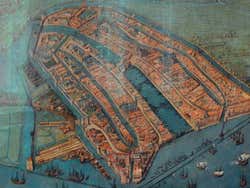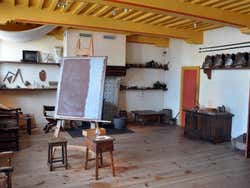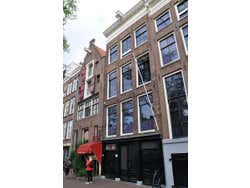
History of Amsterdam
Amsterdam emerged from a small fishing village, as most other cities along the seashore.
During the twelfth century, the fishermen living on the shore of River Amstel built a dam to prevent the settlement from flooding and this led the city to be called Amsteldam.
The town joined the Hanseatic League in 1358 and it began to stand out as a trading center in the north of Europe.
Charles V of Spain inherited the “Spanish Netherlands” from his grandmother Mary of Burgundy after her death in 1482. Spain’s dependency and the discovery of the New World contributed to the city becoming the most important port in the world after Lisbon.
Amsterdam became specialized in the grain and arms trade, and after the King of Portugal opened a local office in the city, it developed into the base for the resale of spices from India.
Eighty Years’ War
In 1578, Amsterdam gave its support to William I of Orange, most important leader of the revolt against the Spanish Habsburgs. The principal reasons for the Dutch uprising were: the population wanted religious freedom, the growing nationalist movement, and the nobility wanted more political power. Moreover, the repression of the previous revolts by the Grand Duke of Alba and the introduction of the Council of Troubles had led to more unrest.
William the Taciturn drove the uprising which led to the Eighty Years’ War and the final declaration of independence of the Dutch Republic in 1648.
Meanwhile, the Portuguese succession crisis of 1580 drove Portugal and Spain to unite under Philip II of Spain, so Amsterdam had to find new suppliers. Against the prohibition of Spain, the Dutch ships sailed to the Malabar region of southern India, Malacca in Malaysia, the Maluku Islands in Indonesia and the small Antilles.
In 1609, the city of Amsterdam founded one of the earliest banks, very similar to the banks in the north of Italy like Venice. It became essential for the development of the city’s trade and commerce. During the seventeenth century, Amsterdam grew into the most powerful financial center in the world and its stock market was one of the first to work daily.
The Golden Age
The seventeenth century is considered the city’s Golden Age. Amsterdam demonstrated its world power by constructing magnificent building in the Old Town, for example, the Town Hall in Dam Square. The city also became home for many European artists and intellectuals, like Rembrandt, Spinoza and Descartes, who fled from the various wars that were ravaging the Old Continent.
The Athenaeum Illustre school was established in 1632.
Dutch tolerance attracted many expelled Jews from Spain and Portugal to Amsterdam and the rest of the Republic. Consequently, it became an international center of precious stones and metals.
During the Golden Age, the wealthy merchants controlled the city. To defend their interests, the citizens broke Amsterdam’s dikes in two occasions, in opposition to William II and Louis XIV of France.
The headquarters of the Dutch East India Company was established in Amsterdam in 1602. Its colonial traffic covered half the world and competed against England, Spain and Portugal. In later years, this company transported slaves between Africa and America.
By the end of the century, the Dutch Republic lost a lot of its power over its colonies to England. Moreover, Amsterdam lost political power to The Hague.
The conflicts against England, the Prussian and French troops put an end to the country’s Golden Age.
Amsterdam, capital of the Netherlands
In 1810 Napoleon invaded the Netherlands, creating the Kingdom of Holland, and the capital was moved to Amsterdam. The country suffered greatly, especially its trade because of the international blockade.
When the French troops were defeated, William Frederick proclaimed himself King William I of the United Kingdom of the Netherlands. The kingdom included Belgium and Luxembourg. Amsterdam remained capital of the new country.
The Belgians revolted in 1830 and gained their independence. Later, Luxembourg would do the same.
Amsterdam experienced another “Golden Age” during the last decades of the nineteenth century thanks to the Industrial Revolution. Amsterdam expanded greatly and built numerous public works, new museums, the Central Station, the Concertgebouw, and the construction of new canals.
During World War I, the Netherlands remained neutral.
During World War II, it tried to remain neutral but was invaded by the Nazi Germans on 10 May 1940.
The Jewish population in Holland were persecuted and 100,000 were deported to various extermination camps. One of the most famous Jewish victims is Anne Frank who hid during two years in the city.
Amsterdam nowadays
Nowadays, Rotterdam has become the county’s most important harbour and The Hague is the economic capital of the Netherlands. However, Amsterdam has maintained its cultural importance and is still a major industrial city. Moreover, it has the country’s largest international airports (Schiphol Airport) and is a symbol of tolerance and freedom.


